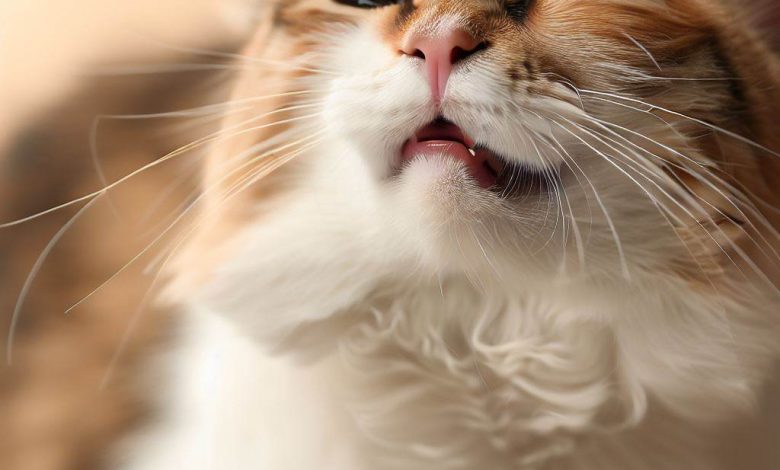Ways Stop Cat from Peeing Outside the Box

Living with a cat brings immense joy, but when they start peeing outside the litter box, it can be a frustrating and messy situation. Don’t worry, though! We’ve got you covered with some practical tips and strategies to address this common issue. In this article, we’ll explore why cats sometimes miss the litter box, how to handle the situation without resorting to punishment, and ways to establish a consistent litter box routine that both you and your furry companion can appreciate.
How to Handle a Cat Peeing Outside the Litter Box
Okay, so your cat has been a bit rebellious with their bathroom habits. Before you go into full-on disciplinary mode, take a deep breath and remember that understanding and positive reinforcement are key.
Instead of punishing your cat, focus on redirecting their behavior and creating an environment that encourages proper litter box use. Let’s dive into some practical strategies that can make a difference.
Also Read: Lilac Tortoiseshell Cats: Characteristics, Price, and Appearance
Reasons for a Cat Peeing Outside the Litter Box
There can be several reasons behind this behavior, such as medical issues, stress or anxiety, litter box aversion, or even marking territory. Here are some common reasons why a cat might exhibit this behavior:
1. Medical problems
Cats may pee outside the litter box if they have a urinary tract infection, bladder stones, kidney disease, diabetes, or other medical conditions that cause discomfort or increased urgency to urinate. It’s essential to rule out any medical issues by consulting a veterinarian.
2. Litter box problems
Cats are usually clean animals, and they may avoid the litter box if it’s dirty, not cleaned frequently, or if the litter is not to their liking. Some cats have preferences for certain types of litter or dislike scented litter. Additionally, if there aren’t enough litter boxes available in a multi-cat household, a cat may feel stressed and choose to pee outside the box.
3. Stress or anxiety
Cats are sensitive to changes in their environment and can become stressed or anxious. Major life changes such as moving to a new home, the addition of a new pet or family member, or even changes in routine can cause a cat to pee outside the litter box. Cats may also mark their territory by spraying urine when they feel threatened or stressed.
4. Territorial marking:
Unneutered male cats, as well as some spayed or neutered cats, may mark their territory by spraying urine on vertical surfaces. This behavior is often seen in response to the presence of other cats or animals in the area.
5. Litter box aversion:
Negative experiences associated with the litter box, such as being startled while using it or associating pain with the litter box due to a medical issue, can cause a cat to develop an aversion to using it.
6. Inappropriate elimination due to age:
Older cats may develop cognitive dysfunction or physical limitations that make it difficult for them to access the litter box in time. Arthritis or other age-related conditions can make it painful for a cat to climb into a litter box.
It’s essential to identify the underlying cause to effectively address the problem. Pay attention to any recent changes in your cat’s routine or environment, and consider consulting a veterinarian to rule out any medical conditions.
Also Read: How to Tell if Your Cat Has a Fever Without a Thermometer
Tips and Strategies for Dealing with a Cat Peeing Outside the Litter Box:
Now that you have a better grasp of the possible causes, let’s dive into some practical tips and strategies to tackle the issue head-on. Start by thoroughly cleaning any soiled areas to eliminate the lingering scent that might tempt your cat to return.
Make sure you have enough litter boxes available, placed in quiet and accessible locations. Experiment with different types of litter and litter box designs to find what your cat prefers. Regularly scoop the litter boxes and maintain cleanliness to provide a hygienic and inviting space for your cat’s business.
Also Read: 10 Proven Ways to Prevent Cats from Eating Plant
Should I punish my cat for pooping on the floor?
Cats don’t respond well to negative reinforcement, and it can create fear and stress, making the problem worse. Instead, focus on positive reinforcement techniques.
When your cat uses the litter box correctly, praise them and offer treats or a gentle pat on the head. Positive associations will help them understand that using the litter box is the way to go.
Also Read: Mouth Cancer in Cats: Symptoms, Treatment, Care
Establishing a Consistent Litter Box Routine: A Step-by-Step Guide
Consistency is key when it comes to litter box training. Start by establishing a routine for your cat. Feed them at regular times and provide opportunities for play and exercise. Place the litter box in a quiet and easily accessible area, away from noisy appliances or high-traffic zones.
Show your cat the location of the litter box and gently place them inside after meals or naps. Positive reinforcement comes into play here too! When they use the litter box appropriately, shower them with praise and rewards. Soon enough, they’ll associate the litter box with positive experiences.
What product stops cats from peeing in the house?
You may have heard about using deterrents to discourage your cat from peeing in inappropriate areas. While these methods can be helpful, they should be used in conjunction with other strategies.
Deterrents like citrus sprays or aluminum foil can create an unpleasant experience for cats and divert their attention back to the litter box.
However, remember that addressing the underlying cause is crucial. Deterrents alone won’t solve the issue if your cat is experiencing stress, anxiety, or medical problems.
Preventing Stress-Related Litter Box Issues in Cats: Tips and Advice:
Cats are sensitive creatures, and stress or anxiety can contribute to litter box problems. To prevent stress-related issues, create a calm and harmonious environment for your cat. Provide hiding spots, cozy beds, and vertical spaces for them to climb and explore
. Interactive toys and regular play sessions can also help alleviate stress. Additionally, establish consistent routines and minimize disruptions as much as possible. If you notice signs of anxiety or excessive stress in your cat, consider using pheromone diffusers or seeking advice from a professional.
Conclusion
Dealing with a cat peeing outside the litter box can be challenging, but remember, patience and understanding are key. By following these tips and strategies, you can create a positive and inviting litter box environment for your cat.
Remember to focus on positive reinforcement, establish a consistent routine, address any underlying medical or behavioral issues, and seek professional help if needed. With time and dedication, you and your furry friend can overcome litter box challenges and enjoy a happy, stress-free coexistence.




